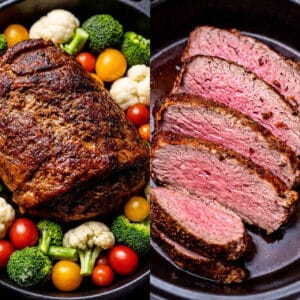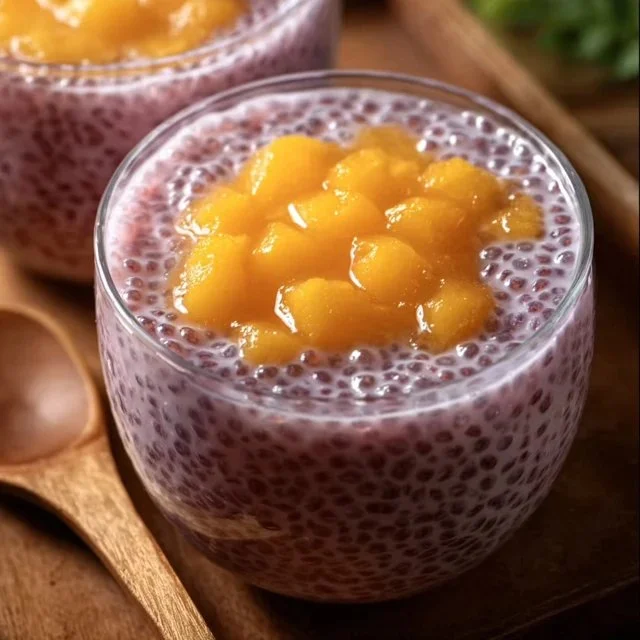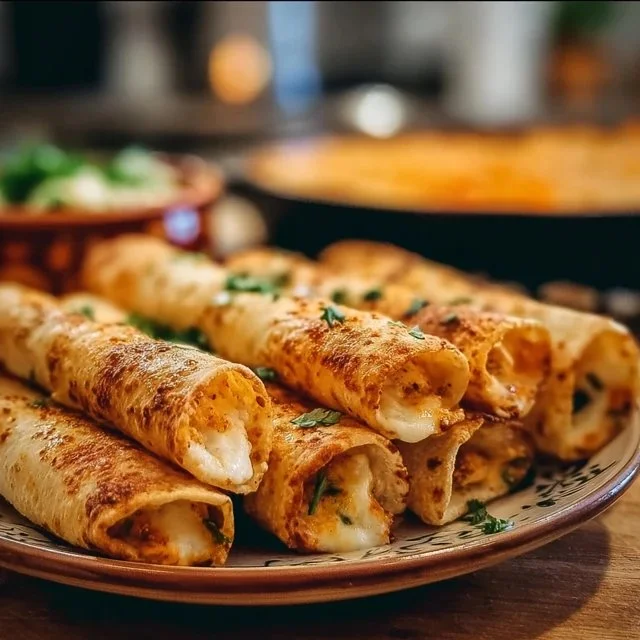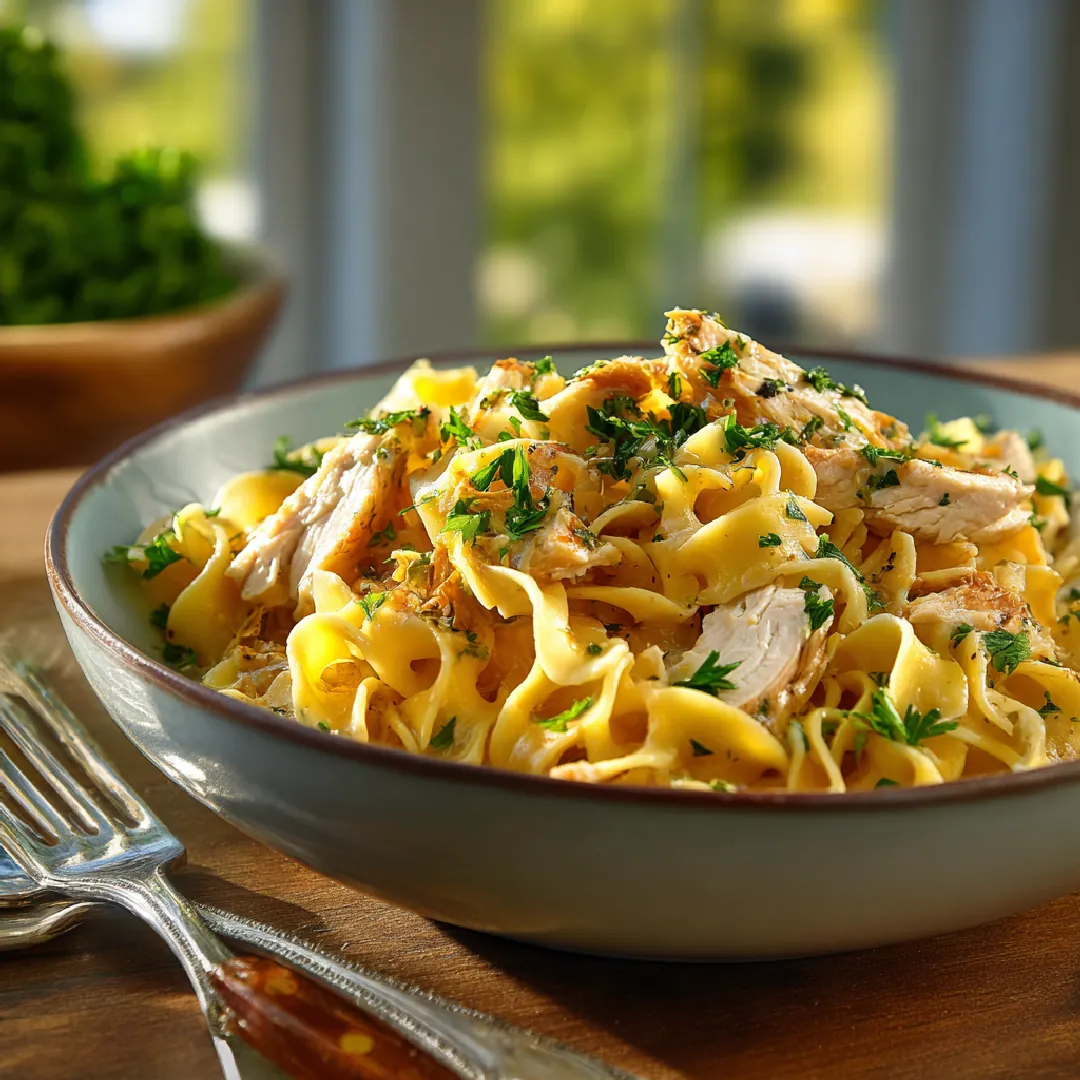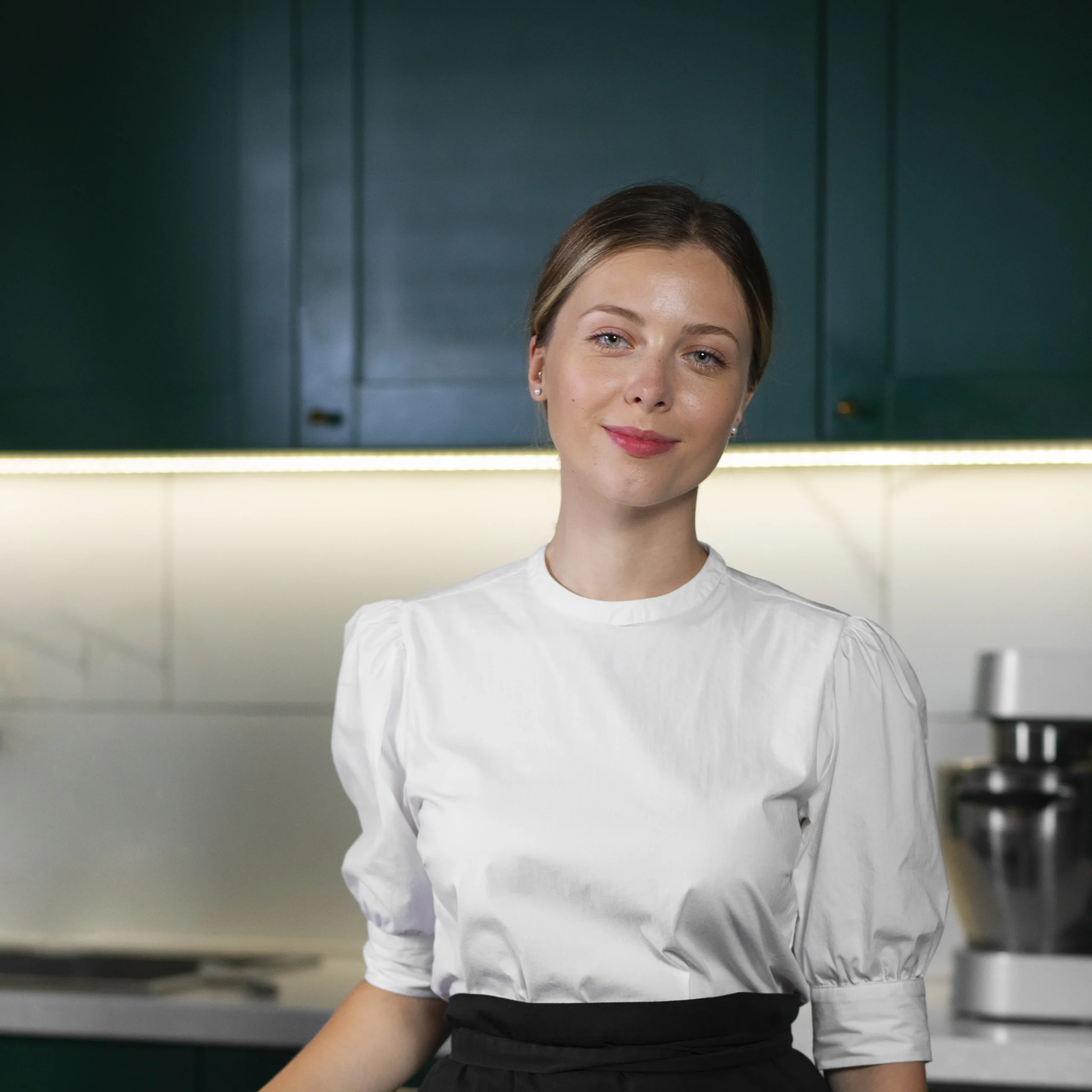Table of Contents
Introduction
Chuck roast is a beloved cut of beef known for its robust flavor, tender texture, and versatility in cooking. Whether you’re planning a hearty family dinner or a comforting weekend meal, chuck roast is often a go-to option. However, a common question arises among home cooks: is chuck roast better in crockpot or oven?
This question doesn’t have a one-size-fits-all answer because each cooking method has unique advantages. The crockpot, or slow cooker, is celebrated for its convenience and ability to tenderize meat over several hours. On the other hand, the oven offers opportunities for creating complex textures and deep flavors through roasting. In this article, we’ll explore the pros and cons of each method, provide step-by-step cooking guides, and help you decide which technique suits your needs best.
When it comes to chuck roast, the preparation method can significantly affect the final dish. Both the crockpot and the oven transform this tough cut into a culinary delight. Let’s delve deeper to understand the unique characteristics of each cooking style.
What is Chuck Roast?
Chuck roast is a cut of beef taken from the shoulder area of the cow. Known for its affordability and bold flavor, it contains a good amount of connective tissue and marbling, which makes it ideal for slow cooking methods. This cut is often chosen for pot roasts, stews, and braised dishes due to its ability to break down and become tender when cooked over a longer period.
Key Characteristics of Chuck Roast
- Marbling: The fat content in chuck roast adds richness and flavor.
- Toughness: Due to its location in the cow, chuck roast can be tough if not cooked properly.
- Flavor Profile: Chuck roast has a hearty, beefy flavor that works well with bold seasonings and slow cooking.
Cooking Methods Overview
Cooking chuck roast typically involves two primary methods: using a crockpot or oven. Both methods aim to transform the tough meat into a fork-tender dish, but the processes differ significantly.
Crockpot (Slow Cooker) Cooking
The crockpot excels in low-temperature, slow-cooking scenarios. It maintains a consistent heat over several hours, ensuring the connective tissues in the chuck roast break down completely, resulting in a melt-in-your-mouth texture. This method is perfect for busy individuals who want a “set it and forget it” solution.
Oven Roasting
The oven method offers more control over temperature and texture. Roasting at higher heat can create a delicious crust on the outside while locking in the meat’s juices. While it requires more attention than a crockpot, the result can be a dish with layers of flavor and a balance between tender and slightly firm textures.
Advantages of Cooking Chuck Roast in a Crockpot
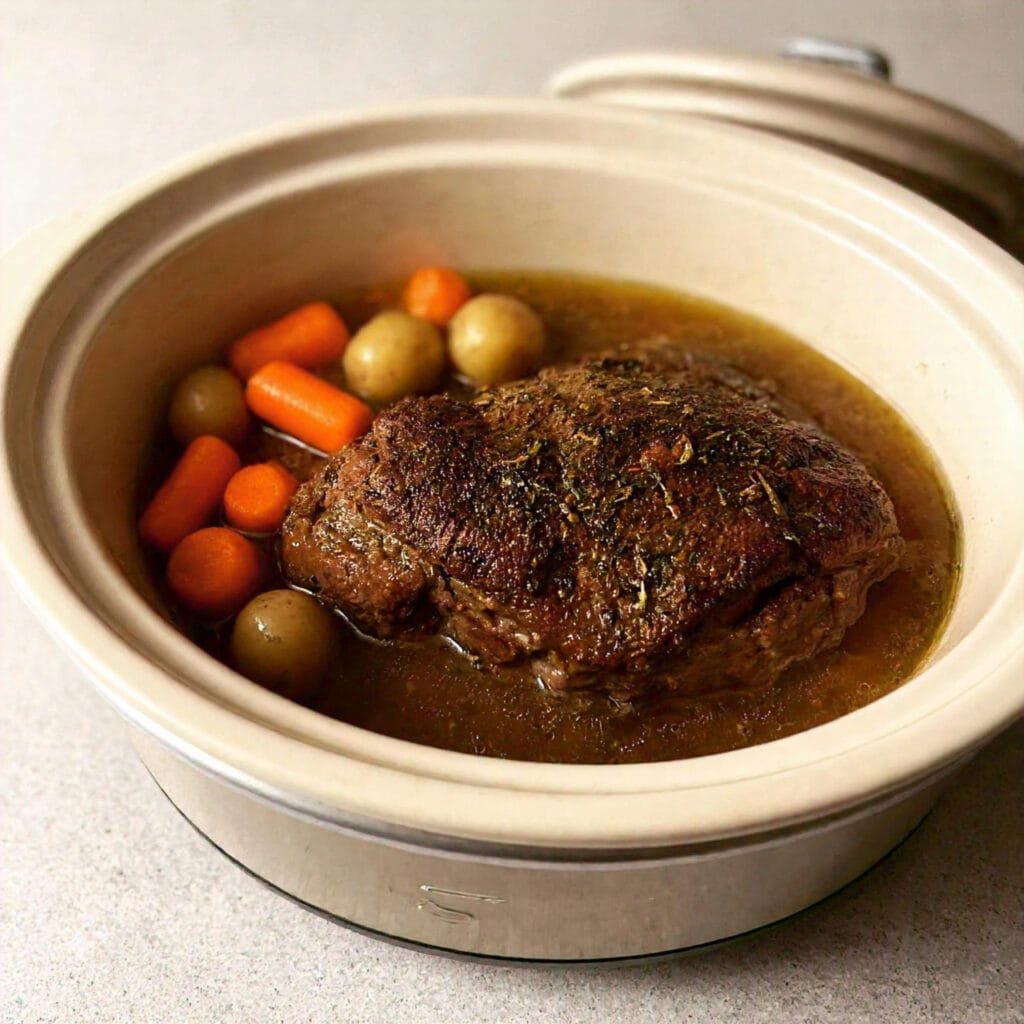
Unmatched Tenderness
The slow-cooking process in a crockpot allows the chuck roast to simmer at a consistent, low temperature for hours. This gradual heat breaks down the tough connective tissues and collagen in the meat, creating a buttery, melt-in-your-mouth texture.
Ease and Convenience
One of the biggest advantages of using a crockpot is its hands-off approach. Once you prepare the ingredients and set the timer, the crockpot does the rest. This makes it ideal for busy schedules, allowing you to focus on other tasks while your meal cooks.
Enhanced Flavor Absorption
The sealed environment of a crockpot helps the roast absorb the flavors of spices, herbs, and other ingredients in the pot. The long cooking time allows the meat to meld with the broth or sauce, creating a well-seasoned, savory dish.
Energy Efficiency
Crockpots use less energy compared to an oven, making them a cost-effective choice for prolonged cooking. They are also less likely to heat up your kitchen, which is particularly beneficial in warmer months.
Advantages of Cooking Chuck Roast in the Oven
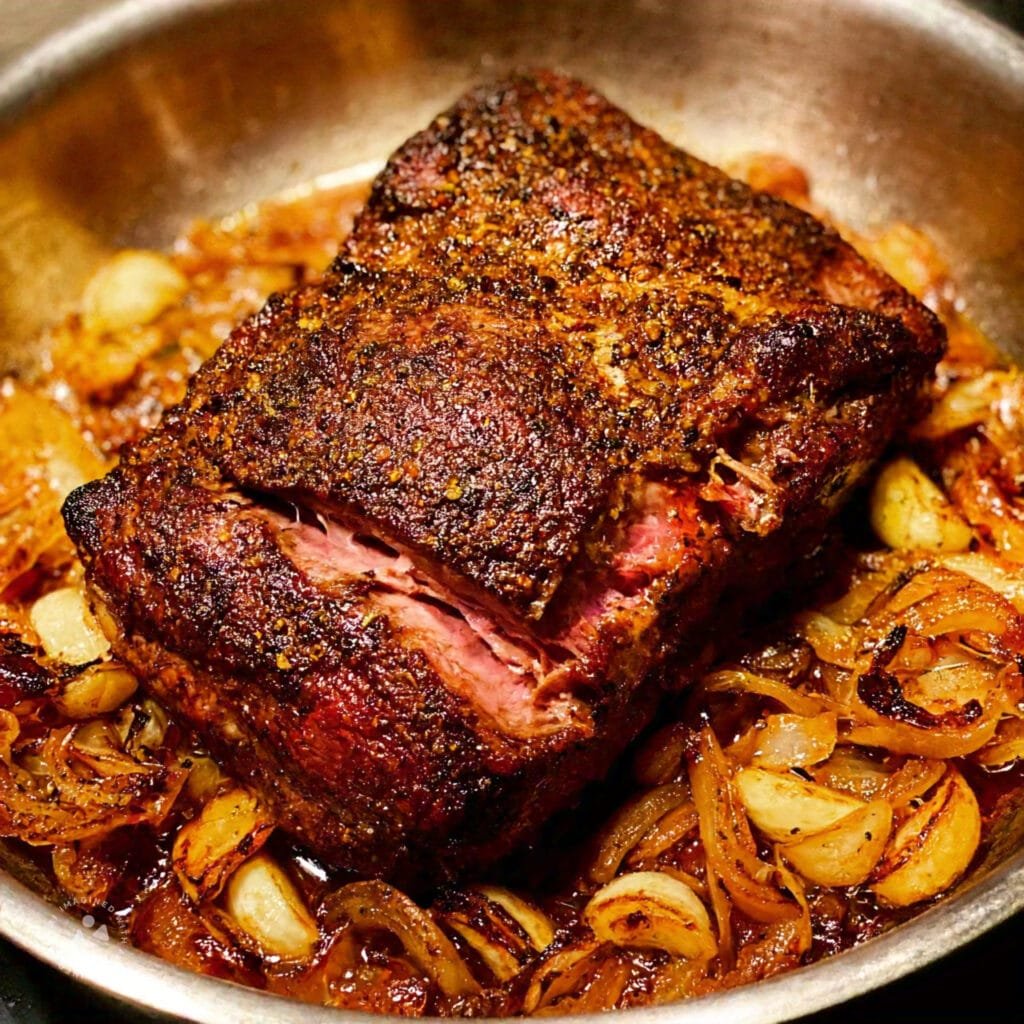
Superior Crust Formation
One of the standout benefits of oven-roasting is the ability to create a caramelized crust on the surface of the meat. This Maillard reaction adds depth and complexity to the flavor profile, providing a contrast to the tender interior.
Customizable Textures
The oven method offers more control over the final texture of the roast. By adjusting the cooking temperature and time, you can achieve anything from a tender, fall-apart roast to a slightly firm, sliceable texture.
Shorter Cooking Time
Compared to a crockpot, an oven can cook a chuck roast in less time, especially when roasting at higher temperatures. This can be advantageous when you’re short on time but still want to enjoy a homemade meal.
Versatility in Cooking Techniques
The oven provides options for additional techniques like broiling, searing, or braising, allowing you to experiment with different flavor profiles and finishes. For example, you can sear the meat on a stovetop before transferring it to the oven to enhance the flavor.
Crockpot vs. Oven: Which Method Wins?
Both the crockpot and oven have their unique strengths, making them suitable for different cooking scenarios. Let’s analyze these methods across key factors to help you determine the best approach for your chuck roast.
Flavor Profile
- Crockpot: The slow, moist heat of a crockpot allows flavors to permeate the meat deeply. Ingredients like onions, garlic, and herbs combine harmoniously over hours, creating a consistent, savory flavor throughout the roast. However, the flavor can sometimes lack the depth provided by browning.
- Oven: Oven-roasting excels in creating a rich, layered flavor thanks to the browning process. A well-seared crust enhances the overall taste and adds a pleasing textural contrast to the tender interior.
Winner: Oven (for complex flavors); Crockpot (for well-infused flavors).
Texture
- Crockpot: The extended cooking time at low temperatures ensures the chuck roast becomes extremely tender, often shredding effortlessly. This makes it ideal for dishes like pulled beef or pot roast.
- Oven: Oven-roasting provides more control over the final texture. Depending on the cooking method, you can achieve either a tender result or a slightly firmer roast that holds its shape for slicing.
Winner: Crockpot (for tenderness); Oven (for texture versatility).
Convenience
- Crockpot: A clear winner for ease, the crockpot allows you to prepare your ingredients, set the timer, and leave it unattended for hours. There’s minimal risk of overcooking or drying out the roast.
- Oven: While an oven-roasted chuck roast requires periodic checking, such as basting or temperature monitoring, it doesn’t offer the same level of “set it and forget it” simplicity.
Winner: Crockpot.
Cooking Time
- Crockpot: Cooking a chuck roast in a crockpot typically takes 6–8 hours on low or 4–6 hours on high, depending on the size of the roast.
- Oven: An oven-roasted chuck roast generally cooks in 2–3 hours at 325°F (163°C), making it significantly faster than a crockpot.
Winner: Oven.
Energy Efficiency
- Crockpot: Using a slow cooker is more energy-efficient than running an oven for extended periods. It’s particularly advantageous for long cooking times.
- Oven: While ovens consume more energy, they cook faster, which can offset some of the energy usage for shorter recipes.
Winner: Crockpot.
Ideal Uses
- Crockpot: Best for stews, shredded beef, and recipes that prioritize tenderness and infused flavors.
- Oven: Great for dishes that benefit from a crisp crust or those requiring a firmer texture, like holiday roasts.
Summary Table: Crockpot vs. Oven
| Criteria | Crockpot | Oven |
|---|---|---|
| Flavor | Infused, consistent | Rich, layered |
| Texture | Extremely tender | Versatile |
| Convenience | Set it and forget it | Requires attention |
| Cooking Time | 6–8 hours (low) | 2–3 hours |
| Energy Efficiency | Highly efficient | Moderately efficient |
| Best For | Shredded or tender recipes | Sliced roasts with crust |
Tips for Enhancing Chuck Roast Flavor
Marinating for Added Depth
Marinate the chuck roast overnight with a blend of olive oil, balsamic vinegar, garlic, and fresh herbs like rosemary and thyme. This step infuses the meat with a deep, aromatic flavor.
Use Quality Ingredients
- Choose high-quality beef for the best taste. Look for well-marbled chuck roast with an even distribution of fat.
- Use homemade beef broth or stock for a richer flavor compared to store-bought alternatives.
Layering Flavors
- Aromatics: Add ingredients like bay leaves, fresh herbs, or a splash of red wine to elevate the flavor.
- Seasoning: Ensure the seasoning is generous, as slow cooking or roasting can mellow the flavors over time.
Searing Before Cooking
Whether using a crockpot or oven, searing the meat first is an excellent way to enhance its natural flavors and create a caramelized crust. Use a hot skillet with a small amount of oil for the best results.
Finishing with a Sauce or Gravy
Transform the cooking liquid into a gravy by thickening it with flour or cornstarch. A flavorful gravy complements the chuck roast and ties all the components of the meal together.
Common Mistakes to Avoid
Overcooking or Undercooking
- Crockpot: Avoid cooking on high for too long as it can dry out the meat. Stick to low and slow for the best results.
- Oven: Use a meat thermometer to check for doneness, especially if you prefer a specific texture.
Skipping the Sear
Many cooks skip searing to save time, but this step is essential for enhancing flavor and adding complexity to the dish.
Insufficient Liquid
In both the crockpot and oven, failing to add enough liquid can lead to a dry and tough roast. Always ensure there’s enough broth or sauce to keep the meat moist.
Lifting the Lid Too Often (Crockpot)
Opening the lid repeatedly during cooking releases heat and extends the cooking time. Resist the urge to peek and trust the slow-cooking process.
Not Letting the Roast Rest
After cooking, allow the roast to rest for 10–15 minutes. This step redistributes the juices, ensuring every bite is flavorful and moist.
FAQs
How can I make my chuck roast more flavorful?
Enhance flavor by marinating the roast, searing it before cooking, and adding aromatic herbs and spices. Using a rich broth or stock also makes a difference.
How do I prevent my chuck roast from drying out?
Always ensure there’s enough liquid in the crockpot or roasting pan. In the oven, cover the roast tightly with foil or a lid for most of the cooking time to retain moisture.
Can I cook a frozen chuck roast?
Yes, you can cook a frozen chuck roast, but the cooking time will increase significantly. For best results, thaw the roast in the refrigerator overnight.
What’s the best temperature for a perfectly cooked chuck roast?
For a tender chuck roast, aim for an internal temperature of about 195°F (90°C), as this is when the collagen breaks down.
Should I add vegetables to the crockpot or oven?
Yes, vegetables like carrots, potatoes, onions, and celery enhance the flavor of the roast and create a complete meal.
Is it necessary to sear the chuck roast?
While not strictly necessary, searing adds depth to the flavor and a beautiful crust that enhances the overall dish.
Conclusion
Both the crockpot and oven are excellent methods for cooking chuck roast, and the choice depends on your priorities. If you value convenience and tender meat, the crockpot is your best bet. For richer flavors and a crisp exterior, the oven reigns supreme. Whichever method you choose, proper preparation, seasoning, and attention to detail will guarantee a delicious and satisfying chuck roast every time.

